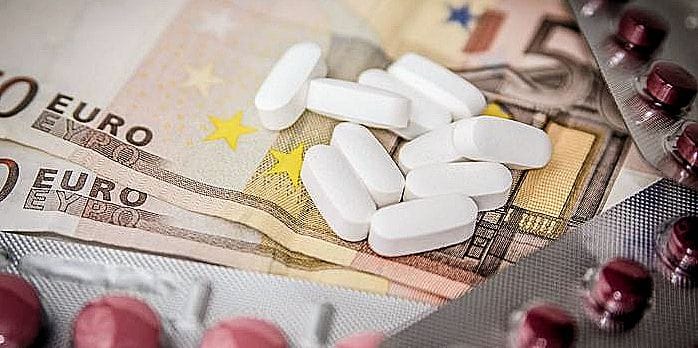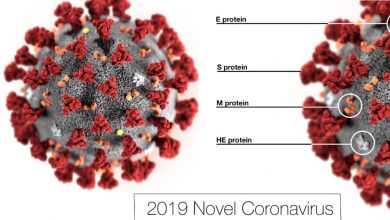
 Patients who developed hepatocellular carcinomas from drugs that arrived too late; unjustified bureaucratic formalities to prescribe them; cases of reinfection in vulnerable groups: from Milan to Catania, doctors talk about the first year of the new therapies, between successes and difficulties. While, according to data from the Icon Court, the 60% of coinfected cirrhotics does not yet have access to the new treatments. Meanwhile, those who are treated with Indian generic drugs are increasing. In Bologna, the hospital offers a service to ensure that those who use them have the right dose of active ingredient and are not using counterfeit molecules.
Patients who developed hepatocellular carcinomas from drugs that arrived too late; unjustified bureaucratic formalities to prescribe them; cases of reinfection in vulnerable groups: from Milan to Catania, doctors talk about the first year of the new therapies, between successes and difficulties. While, according to data from the Icon Court, the 60% of coinfected cirrhotics does not yet have access to the new treatments. Meanwhile, those who are treated with Indian generic drugs are increasing. In Bologna, the hospital offers a service to ensure that those who use them have the right dose of active ingredient and are not using counterfeit molecules.
Having a chronic illness that could get worse with irreversible consequences and knowing that there is a medicine to cure it but we cannot have it: costs too much. The state will give it to us, but only after we get worse.
It is the condition in which thousands of Italians live with the hepatitis C virus (HCV), a liver disease which, if it becomes chronic, also compromises other systems and favors other pathologies. Since the end of 2014, treatments capable of curing this pathology quickly and without side effects have been authorized and reimbursed by the National Health Service (NHS). These are direct antiviral therapies without interferon, extremely effective but also very expensive, whose price to the public reaches 70 thousand euros per person. In order to be able to offer these innovative drugs, the government has set up a specific fund of one billion for two years (2015-2016), but this money is sufficient to treat only a part of the most seriously ill - about 50,000 people - while the National Plan for the prevention of viral hepatitis, approved by the State-Regions conference at the beginning of the year, estimates that there are one million Italians with the virus and 330,000 those with cirrhosis of the liver. The Italian Medicines Agency (Aifa), has established that to access the new treatments you must be in a condition of liver cirrhosis, specifically having F3 or F4 fibrosis, or the two highest levels of liver damage.
HIV/HCV coinfection: a "dangerous relationship" not recognized in Italy.
St There are 33,000 people in Italy who have a confirmed HIV and Hepatitis C co-infection. Of these, it has been estimated that around 8,000 are at risk of dying if not treated soon. L'European Association for the Study of the Liver (EASL) recommended treating co-infected people as soon as possible, because the coexistence of the two viruses favors and accelerates the aggravation of liver disease. However, AIFA has not considered in any way, in the priority criteria for access to treatment, the greater progression of liver disease that the condition of HIV/HCV coinfection actually entails. From the data provided to us by AIFA, it emerges that, at the end of 2015, of the 30,823 people treated overall with the drugs supplied by the NHS, 2,770 had a coinfection: less than 9% of the total. This means that over 90% of the coinfects did not have access to the new drugs, unlike what happens in other countries where all those who have HIV-HCV co-infection receive treatment automatically.
There are 33,000 people in Italy who have a confirmed HIV and Hepatitis C co-infection. Of these, it has been estimated that around 8,000 are at risk of dying if not treated soon. L'European Association for the Study of the Liver (EASL) recommended treating co-infected people as soon as possible, because the coexistence of the two viruses favors and accelerates the aggravation of liver disease. However, AIFA has not considered in any way, in the priority criteria for access to treatment, the greater progression of liver disease that the condition of HIV/HCV coinfection actually entails. From the data provided to us by AIFA, it emerges that, at the end of 2015, of the 30,823 people treated overall with the drugs supplied by the NHS, 2,770 had a coinfection: less than 9% of the total. This means that over 90% of the coinfects did not have access to the new drugs, unlike what happens in other countries where all those who have HIV-HCV co-infection receive treatment automatically.
The data is even more worrying when compared with that of the court Icon (which studies almost 14,000 Italians with HIV): as of December 2015 about 60% of co-infected patients who have already reached the stage of cirrhosis have not yet been treated. Yet it is precisely the coinfects who respond particularly well to the new treatments: from the data collected in the Bologna area it appears that the 99.3% of hiv-HCV patients treated with the new drugs are healed, while the eradication of the disease in monoinfected patients stops at 88%.
The risk of cancer if the cure arrives late
 The obligation to give the new treatment only to people with cirrhosis of the liver is felt badly by Italian infectious disease and hepatologist doctors. We have collected their opinions, from Milan to Lecce, passing through the islands. Everyone says that not being treated for Hepatitis C when the liver is still in good condition is dangerous, especially for HIV/HCV coinfects. Not only because liver disease develops more rapidly when the two viruses coexist, but also because – in the event of a worsening of the disease – there are few transplant centers that accept people with HIV, as we were told at Cagliari.
The obligation to give the new treatment only to people with cirrhosis of the liver is felt badly by Italian infectious disease and hepatologist doctors. We have collected their opinions, from Milan to Lecce, passing through the islands. Everyone says that not being treated for Hepatitis C when the liver is still in good condition is dangerous, especially for HIV/HCV coinfects. Not only because liver disease develops more rapidly when the two viruses coexist, but also because – in the event of a worsening of the disease – there are few transplant centers that accept people with HIV, as we were told at Cagliari.
TO Catania two cases have been recorded in which hepatocarcinomas have arisen – or tumors caused by liver disease – in two people in whom hepatitis C had already been eradicated thanks to the new, very expensive treatments. This happened because by the time the virus was finally cleared, the organ had already been irreversibly damaged. The paradox that emerges is that, if on the one hand all the doctors interviewed are convinced that the eradication of the disease means healing for the patient only if it is caught in time, i.e. before cirrhosis develops, on the other hand, patients in this condition (with F2 or lower liver fibrosis) are now excluded, by law, from access to treatment. People with Hepatitis C and still healthy livers are refused new treatments even if they have cancer or have very serious blood disorders, we were told a Catanzaro. But treatment, if it arrives late, could even worsen the disease: two cases of this type have been reported in Bologna.
The bureaucracy that delays treatment
Delays in accessing care have also been reported for people who are eligible for it. This depends not only on the financial problems of the regions, but also on the lack of sufficient personnel to carefully follow all the patients in some hospitals. Among the obstacles to the prescription of new drugs, several doctors, in Rome and Modena heavy bureaucratic tasks have been reported to us, which fall on the shoulders of health professionals and which could have been avoided if Aifa had established a system of coordination with the regions in the prescription procedures. In addition to personnel, some regions also lack the necessary tools for prescription. In all of Calabria there is only one fibroscan, or the instrument used to measure the level of fibrosis: a big problem for those who have not yet had access to treatment and must remain under control.
If the interferon treatment costs slightly less than Harvoni
 Today the price that the Italian state pays for new drugs is officially unknown even to the doctors who prescribe them, but information is given through scientific informants. We have so rebuilt the price currently paid by our NHS for each therapy: from reports, it emerges that the price of the treatment consisting of one of the new drugs together with interferon, which causes strong side effects, is less than 6,000 euros lower than that of Harvoni, a new drug that heals without discomfort. Treatment with interferon is the only one that is also offered to Hepatitis C patients with F2 fibrosis (ie those who are not yet in cirrhosis) and with other extra-hepatic diseases. From our interviews it emerges that people without cirrhosis, to avoid being subjected to fever, headache, bone pain and depression for months, tend not to undergo this therapy and wait for other treatments. Thus it would seem that, for an insignificant difference in expense, a treatment is offered which pushes patients to postpone treatment or to suffer serious damage to their living conditions, instead of an easy-to-take-up and decisive therapy.
Today the price that the Italian state pays for new drugs is officially unknown even to the doctors who prescribe them, but information is given through scientific informants. We have so rebuilt the price currently paid by our NHS for each therapy: from reports, it emerges that the price of the treatment consisting of one of the new drugs together with interferon, which causes strong side effects, is less than 6,000 euros lower than that of Harvoni, a new drug that heals without discomfort. Treatment with interferon is the only one that is also offered to Hepatitis C patients with F2 fibrosis (ie those who are not yet in cirrhosis) and with other extra-hepatic diseases. From our interviews it emerges that people without cirrhosis, to avoid being subjected to fever, headache, bone pain and depression for months, tend not to undergo this therapy and wait for other treatments. Thus it would seem that, for an insignificant difference in expense, a treatment is offered which pushes patients to postpone treatment or to suffer serious damage to their living conditions, instead of an easy-to-take-up and decisive therapy.
The reinfection
TO Milan And Rome cases of HCV reinfection are reported in vulnerable groups even after treatment. This is a risk that could be addressed by treating more people. But information is also important because, as we have been told, in many cases Hepatitis C was transmitted during sexual encounters through tools used to inhale substances that were not considered to be at risk: the virus passed even if the relationship was protected.
Super drugs and super earnings
We have sent to the Italian office of Gilead, the American pharmaceutical company that produces the main super-drugs, Sovaldi and Harvoni, eight questions to help us understand the perspectives of access to care in our country. But after the questions were evaluated we were informed that the Italian management of the company has decided, for the time being, not to answer. Yet on its website the multinational claims that in 2014 it "helped more people than ever". Certainly, as emerges from its financial statements, that year it earned much more than ever: 12.4 billion dollars were in fact the revenues from the sale of the two products in 2014, double the previous year. And in 2015 it did even better: the revenues of the two super drugs reached 19.13 billion dollars (13.86 from Harvoni and 5.27 from Sovaldi). A large portion of these earnings came directly from Italy, where the National Health Service spent 680 million euros on Sovaldi alone in the first nine months of 2015: a figure higher than that destined for the purchase of the 10 most expensive anticancer drugs purchased by the NHS, as highlighted by an analysis by healthdesk on the latest Osmed report (Observatory on the Use of Medicines) by Aifa. Gilead has thus recovered the investment of 11.2 billion dollars made in 2012 when it bought the company Pharmasset Inc. which holds the patent on the Sofosbuvir molecule which is the basis of Sovaldi and Harvoni.
The Indian "solution" and the skepticism of doctors
 “I understand that the state, if it doesn't have money for everyone, chooses to treat the most seriously ill. But I had to do something. Because I was getting worse. I had to do something before I got cancer." They are the words we have heard from Margherita pizza, 56 years old including 20 lived with Hepatitis C, who told us his story of health research and cure. A story that goes in a different direction from the one recommended by Italian laws and institutions, but which has brought health and happiness to her and her loved ones. The drugs Margherita has taken are safe, because they are produced by an Indian pharmaceutical company, Natco, which was licensed directly by Gilead. This happened thanks to the fact that the patent on the molecules at the base of Sovaldi and Harvoni has not been recognized in India and the pharmaceutical companies of this country are able to produce generic versions of the two drugs at very low prices. For this Gilead in 2014 has entered into an agreement with the seven major manufacturers of generics in the country, which thus recognize the rights, while producing at lower costs. Thus Indian generics are also guaranteed by Gilead. Yet almost all the doctors we interviewed showed skepticism towards drugs of this origin, due to the fact that the Italian state does not guarantee them in any way. But in several hospitals there are beginning to be openings to allow patients to take these therapies. We discovered that the S. Orsola di Bologna offers a blood analysis service that can verify the actual presence of the drug in the tablets you are taking, if there is a concern that they are counterfeit. An opportunity that we point out following Margherita's advice: “I hope you can let others like me know about this possibility, because today I am a happier person”.
“I understand that the state, if it doesn't have money for everyone, chooses to treat the most seriously ill. But I had to do something. Because I was getting worse. I had to do something before I got cancer." They are the words we have heard from Margherita pizza, 56 years old including 20 lived with Hepatitis C, who told us his story of health research and cure. A story that goes in a different direction from the one recommended by Italian laws and institutions, but which has brought health and happiness to her and her loved ones. The drugs Margherita has taken are safe, because they are produced by an Indian pharmaceutical company, Natco, which was licensed directly by Gilead. This happened thanks to the fact that the patent on the molecules at the base of Sovaldi and Harvoni has not been recognized in India and the pharmaceutical companies of this country are able to produce generic versions of the two drugs at very low prices. For this Gilead in 2014 has entered into an agreement with the seven major manufacturers of generics in the country, which thus recognize the rights, while producing at lower costs. Thus Indian generics are also guaranteed by Gilead. Yet almost all the doctors we interviewed showed skepticism towards drugs of this origin, due to the fact that the Italian state does not guarantee them in any way. But in several hospitals there are beginning to be openings to allow patients to take these therapies. We discovered that the S. Orsola di Bologna offers a blood analysis service that can verify the actual presence of the drug in the tablets you are taking, if there is a concern that they are counterfeit. An opportunity that we point out following Margherita's advice: “I hope you can let others like me know about this possibility, because today I am a happier person”.
Published: Wednesday, March 23, 2016 11:34 |
Me, saved by Indian drugs
 Margherita is 56 years old and has been living with hepatitis C for 20 years. In recent months her viraemia has begun to rise dramatically. “I thought about taking out a 90,000 euro loan to get treatment before I got cancer then I learned of the possibility of generics produced in India and with the help of a relative who works there, I bought Sovaldi for six months at 1,800 euros”. He told us that he has no fear of counterfeit drugs "because they are the same ones sold in Indian pharmacies and authorized by Gilead" and "after three months of terapia the viraemia is now suppressed”. And he recommended: “I hope you can let others like me know about this possibility, because today I am a happier person”.
Margherita is 56 years old and has been living with hepatitis C for 20 years. In recent months her viraemia has begun to rise dramatically. “I thought about taking out a 90,000 euro loan to get treatment before I got cancer then I learned of the possibility of generics produced in India and with the help of a relative who works there, I bought Sovaldi for six months at 1,800 euros”. He told us that he has no fear of counterfeit drugs "because they are the same ones sold in Indian pharmacies and authorized by Gilead" and "after three months of terapia the viraemia is now suppressed”. And he recommended: “I hope you can let others like me know about this possibility, because today I am a happier person”.
Published: Wednesday, 23 March 2016 13:05 |
Related news: AIFA registers: the Agency provides information on treatment data with new drugs for the treatment of hepatitis C
Hepatitis C drugs without side effects
Anti-hepatitis, Gilead will have to pay Merck 200 million dollars
Hepatitis C: the patent case for Gilead's drug Sofosbuvir opens in India
In India or Egypt for anti-hepatitis C super cures, "journeys of hope" are growing
Hepatitis C. In Trentino there are about a thousand patients
Hepatitis C, the rage of patients: "The new drug is not for everyone"
Hepatitis C: stopping a disease or promoting its progression?





